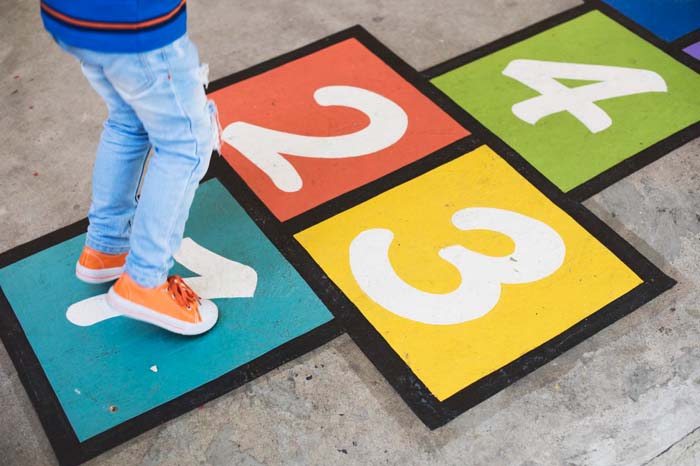If your baby spits up milk after feeding, you might wonder whether baby spitting up curdled milk is good or bad. Well, baby spitting up curdled milk is very common, especially in infants, and it’s nothing to be concerned about. Their tiny digestive systems are still developing, which often causes milk or food to come back into the oesophagus (the tube connecting the mouth to the stomach).
Most babies bring up small amounts of milk while burping, which is completely normal. However, if your little one frequently spits up larger amounts or does so with more force, it could be a sign of reflux or another underlying issue. In this blog, we will explore why babies spit up curdled milk and what you can do to help.
Causes for Baby Spitting Up Curdled Milk
A newborn throwing up curdled milk isn’t something novel or to worry about. Most babies spit curdled milk occasionally without any apparent cause. Here are some reasons for baby spitting up curdled milk:
- Acid Reflux
- An Immature Digestive System
- Pyloric Stenosis
This is one of the most common causes of babies spitting up curdled milk. It happens when the stomach contents come up through the oesophagus and reach the mouth due to an immature gastroesophageal sphincter.
An immature digestive system can be one of the causes of a baby spitting up curdled milk. Over time, their digestive systems get better, and they stop spitting up curdled milk.
This is when your baby’s stomach is narrow, thus making it more difficult for food to travel to the intestines. Usually, surgical intervention is required to treat this condition.
How To Avoid Baby Spitting Up Curdled Milk After Feeding
Here are some of the best ways to manage your newborn throwing up curdled milk and prevent the undue discomfort it brings them.
- Control how you feed them
- Manage the Milk Flow
- Burping
- Experiment with their Diet
- Check their sleeping position
- Feed them in the right position
- Reduce the pressure on their tummy
- Switch your Baby Formula Brand
- After feeding, don’t let them get too active
- Keep Baby’s Head Elevated
- See a Lactation Consultant
If you feed your baby too fast or too much, you’re asking for trouble. Instead of feeding them too much and too many times, increase the amount of your feeding with each meal. Also, look out for the signs of fullness, like slowed sucking or getting distracted.
Keep an eye on the milk flow to reduce incidents of your baby throwing after eating. If your breasts are too full, express some milk to help manage the milk flow. If your baby is bottle-fed, you must check the nipple hole to ensure the milk flow is not too much for the baby to handle.
One of the best ways to prevent babies from spitting curdled milk is burping after feeding. Burp babies frequently, after and even during feeding time, by holding them up and patting them on the back. If you are bottle-feeding, burp them after every 30 ml of milk. If you’ve fed the baby too much, burping them can lead to more spit up!
This one’s for all the parents out there. Have you ever considered tweaking your little one’s diet, as a possible Spitting Prevention Measure? If you’re a breastfeeding mother, you might see significant results when you exclude gas-inducing foods, or even dairy, from your diet. You are what you eat, they say. In this case, your child is, too!
In what position do you put the baby to sleep? Put your baby to sleep on their back. This not only reduces the risk of Sudden Infant Death Syndrome (SIDS) but also the pressure on the tummy and, therefore, the chances of throwing up.
The way you feed your baby can significantly impact how they retain their food. You want to feed them when they are sitting upright. Feeding them in a curled or slouched position can make them throw up.
While placing them on their backs works wonders in relieving tummy pressure, you also want to spare a thought for the clothes you dress your baby in. Avoid anything tight at the waist. For instance, pants with tight elastic bands. The idea is to make them feel comfortable, no matter what they are wearing.
Ever wondered about switching your Baby Formula? You should switch to a formula with a low lactose content or even one that is hypoallergenic. Always make sure you consult your paediatrician before changing your baby’s brand of formula.
After eating, you give your stomach some time to settle, right? You want to make sure you wait at least 30 minutes after feeding before you do tummy time or anything else that is energetic.
Keeping the baby’s head elevated is a great way to prevent acid reflux. Roll up a blanket and place it under the baby’s crib mattress. This will ensure that the baby’s head is elevated, without hurting their posture.
You can see a good lactation consultant. They will help ensure your baby’s mouth is in the correct position for a good latch. This will help prevent your baby from swallowing air and, subsequently, from spitting that curdled milk.
When to Worry About Your Baby Spitting Up?
Most of the time, spitting up isn’t a problem if your baby is happy and growing well. However, in some cases, you should reach out to your baby’s doctor. Here are some scenarios that warrant a doctor’s visit:
- Blood in spit-up
- Spit-up that is green or yellow
- Spit-up that looks like coffee grounds
- Refusing to eat
- Sudden onset of spitting up after six months of age
- Blood in stool
- Not gaining weight
- Frequent coughing or trouble breathing
- Unusual tiredness or lack of energy
- Fewer wet diapers than usual
If you notice any of these symptoms, it’s best to check with your baby’s doctor to make sure everything is okay.
Final Thoughts
Newborns throwing up curdled milk is a normal part of a baby’s development and usually isn’t a cause for concern. Most babies outgrow it as their digestive systems mature. However, if your little one shows signs of discomfort, isn’t gaining weight, or has unusual spit-up (such as blood, green, or yellow colour), it’s important to seek medical advice.
As a parent, trust your instincts. If something doesn’t seem right, don’t hesitate to reach out to your baby’s doctor. You can also check out our blog, Baby Growth Chart for Healthy Indian Babies, for more information on tracking your baby’s growth in their early years.
Also, check out EuroKids Blogs for more insightful information on your child’s development, learning, and health. Check out our nationally recognised preschools, EuroKids, for the first step in your kid’s educational journey!














